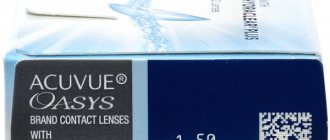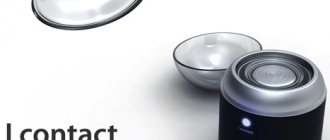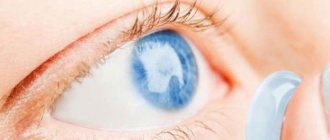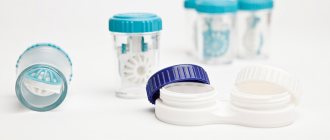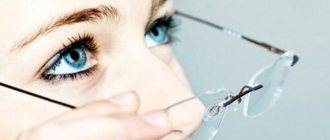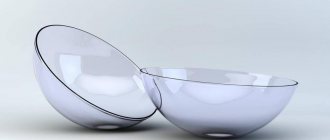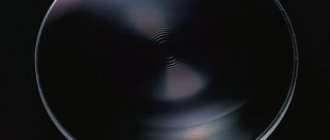What is diopter?
Today, all over the world there is an increase in the number of people with refractive errors. Therefore, many people have come across such a concept as “diopter”. However, some people misunderstand it and believe that it is used to determine visual acuity. There is a connection between these two quantities, but not so direct.
Diopter, also referred to as diopter and/or D, is a unit of measurement of the optical power of lenses and other optical systems. Translated from Greek, diopter means “seeing through.” This name was introduced into the field of optics by the French ophthalmologist Ferdinand Monoyer. In ophthalmological practice, this unit of measurement was proposed to be used by the Swedish ophthalmologist, Nobel Prize laureate Alvar Gullstrand. Today it is generally accepted that 1 diopter is equal to the optical power of a lens with a focal length of 1 m. If we calculate the number of diopters, we will know how much the image is magnified when viewed through a specific optical product.
Previously, the optical power of glasses was calculated in the inch measurement system. However, it was very inconvenient. Firstly, such glass had great refractive power. Secondly, the inch was not the same in different states.
Today, diopters are the main lens parameter used in all countries.
This unit of measurement is used in various optical systems. But most people encounter it when selecting correction products. Let's find out how diopters and vision are related.
Material for glasses lenses.
- Mineral or glass;
- Plastic or polymer.
Mineral or glass lenses differ:
- High throughput, maintained at any level of illumination.
- Excellent degree of protection of the retina from ultraviolet radiation.
- Durability, which allows you to significantly increase their service life.
But, despite all the advantages of glass lenses, they also have a number of disadvantages. First of all, glass lenses are likely to break upon impact, so they require careful handling. Secondly, glasses with lenses are quite heavy, so when wearing such glasses, you feel discomfort in the bridge of the nose.
Polymer, or, more simply put, plastic lenses have the following characteristics:
- Safety and good impact resistance. So if they fall, they most likely will not break, and if this happens, then the damage from plastic fragments is still much less than from glass ones.
- They are much lighter than glass lenses.
- They retain their optical properties even under extreme conditions. For example, plastic lenses are not affected by high temperatures.
- In addition, they are easy to process, which allows you to create them in a wide variety of shapes and sizes.
But plastic lenses still have one drawback. They scratch very easily, which leads to distortion of the image in the field of view.
How do diopters affect vision?
The human eye is a refractive system that consists of several optical media, including the lens. It is a natural lens capable of refracting light rays. In addition, it has the ability to change its curvature, thanks to which we can see at different distances. By changing its shape, the optical power of the eye increases or decreases. Thus, the lens is a lens that characterizes human vision. At rest, the refractive power of a transparent body averages 19.11D.
With various vision pathologies - myopia, farsightedness, astigmatism, presbyopia - improper refraction of rays is observed.
The reason for this may be insufficient or excessive power of the eye, which is associated with the curvature of the lens, cornea or the shape of the entire eyeball. This disadvantage can be compensated for using optics. It corrects incorrect refraction.
For hypermetropia, lenses with diopters with a “+” sign are needed. The correction means necessary for age-related farsightedness have the same indicator. Myopia is corrected with ophthalmic products with “minus” parameters.
Types of coating for lenses with diopters.
Glass lenses are generally only coated with an anti-reflective coating, so we will only look at plastic (polymer) lenses in more detail. So let's get started.
- Anti-reflective (anti-reflective) coating improves image quality and reduces glare. This is due to the fact that several layers of brightening film are applied to the lens, which reduces the amount of light reflected by the lens.
- The hydrophobic coating provides a smoother lens surface, which increases resistance to dirt and reduces fogging when transitioning from cold to warm. Typically applied as the final coat of coating.
- The hardening coating is a special film that is applied to the lens on both sides, providing it with reliable protection from mechanical damage.
- Antistatic coating, as the name implies, this coating does not allow a static charge to form on the surface of the lenses, which, in turn, prevents dust from being attracted to the lens.
- The anti-reflex coating ensures that there is no glare on the outer surface of the lens, making it virtually invisible.
- The metallized coating has the ability to neutralize the effects of electromagnetic radiation.
In general, any coating applied to the surface of the lenses provides not only the comfort of their owner, but also increases the life of the glasses.
How to find out how many diopters are needed for correction?
How are lenses and glasses with diopters selected? Is it possible to determine this indicator using a table for checking visual acuity? Diopters are a unit of measurement of refraction - the ability to refract light. They show the optical power of the correction means. Refraction is determined during a diagnostic procedure such as autorefractometry.
Visual acuity, which is measured in conventional units, is calculated using the Sivtsev/Golovin table. Optical glasses are used in testing, but they indicate the strength of the optics that is required to provide 100 percent sharpness. Refraction parameters can only be calculated using instruments - an autorefractometer and a skiascope.
You can choose the right optics during an examination in an ophthalmologist’s office. We are talking about all types of optical products - glasses and contact lenses.
If you make a mistake in the 1st diopter, which can happen when you select glasses yourself, the correction will be of poor quality. This can lead to further deterioration of vision.
Types of lenses by light transmission
Nowadays, different lenses for glasses can have very different light transmission parameters, and, often, they are based on different physical principles. In this part of the article we will look at them.
- Clear lenses;
- Photochromic lenses;
- Tinted lenses;
- Polarized lenses.
Clear lenses are the most common lenses without any colored coating that provide up to 99% of light transmission. They are considered the most practical and most stylish.
Photochromic lenses, otherwise called chameleons, are able to adapt to any lighting. That is, when there is bright light around, they darken, and at dusk they become transparent. One of the main advantages of such lenses is protection from ultraviolet radiation and reduced eye strain when changing lighting parameters. An interesting feature: at lower temperatures, especially in winter, they darken more than in the summer heat.
Tinted lenses are lenses that are painted in one specific color. These lenses have several subtypes:
- Multi-colored, in which one color gradually turns into another.
- Gradient ones, their upper part is darker than the lower part.
Tinted lenses are used in medicine for photophobia.
Polarized lenses greatly contribute to the clarity of perception of objects, which is especially noticeable in the presence of blinding glare, and also provide better visual comfort. In addition, they reliably protect against ultraviolet radiation. All this is possible due to the fact that they are designed so as not to transmit light with horizontal polarization. These glasses are perfect for drivers, people with increased light sensitivity, as well as those who have undergone eye surgery.
Design of lenses for glasses
In the modern world, technology makes it possible to diversify the shape of lenses, changing their appearance, which affects not only the external, aesthetic side, but also changing their thickness and weight, which in turn also contributes to vision correction. Based on their design, lenses are divided into the following types:
Spherical lenses, which have the same radius of curvature, are one of the most popular designs, suitable for any circumstance. There are two different types of spherical lenses:
- Biconcave – these lenses are designed to correct myopia.
- Biconvex - these lenses allow you to correct farsightedness.
They are not very attractive in appearance, but are universal.
Aspheric lenses, unlike spherical ones, differ in that one or both surfaces of the lenses are not spherical. This unusual shape allows such lenses to provide less severe optical distortion of objects. Their flat surface reflects the incident light well, which significantly improves picture quality. In addition, such lenses, unlike their spherical counterparts, look more natural, eliminating the effect of reducing or enlarging the eyes. They are also lighter and thinner, which makes them easier to withstand prolonged loads. They are well suited for those who suffer from a high degree of myopia or farsightedness. But, due to their flat surface, multiple glares occur, so it is recommended to buy such lenses only with anti-reflective coating.
Bi-aspherical - these lenses have two aspherical surfaces located on both the inner and outer sides of the lens, which gives a clearer image and maximum visibility. These lenses help most with astigmatism and high diopters.
Bifocal lenses, divided into two zones for closer and further distances, are equally suitable for both nearsightedness and farsightedness. The only drawback of such lenses is not very good vision at an average distance.
Progressive lenses are also suitable for people suffering from both farsightedness and myopia. These lenses are divided into three zones:
- At the top there is a zone for long distances;
- In the lower part there is an area for close distances, for example for reading;
- The middle zone is accordingly intended for medium distances.
However, unlike bifocal lenses, progressive lenses allow the segments to smoothly flow into each other, which reduces blur. The only disadvantage of such lenses is that they take a long time to get used to, so it is not recommended to wear them for people who have a large difference in diopters between the left and right eyes, as well as for people with cataracts and strabismus.
In general, choosing glasses with a diopter is not an easy matter and requires special skills or consultation with a specialist. Do not expect positive results from glasses bought at random, somewhere in a market tent, rather the opposite. There is a huge risk of significantly deteriorating vision, or even losing it altogether!
